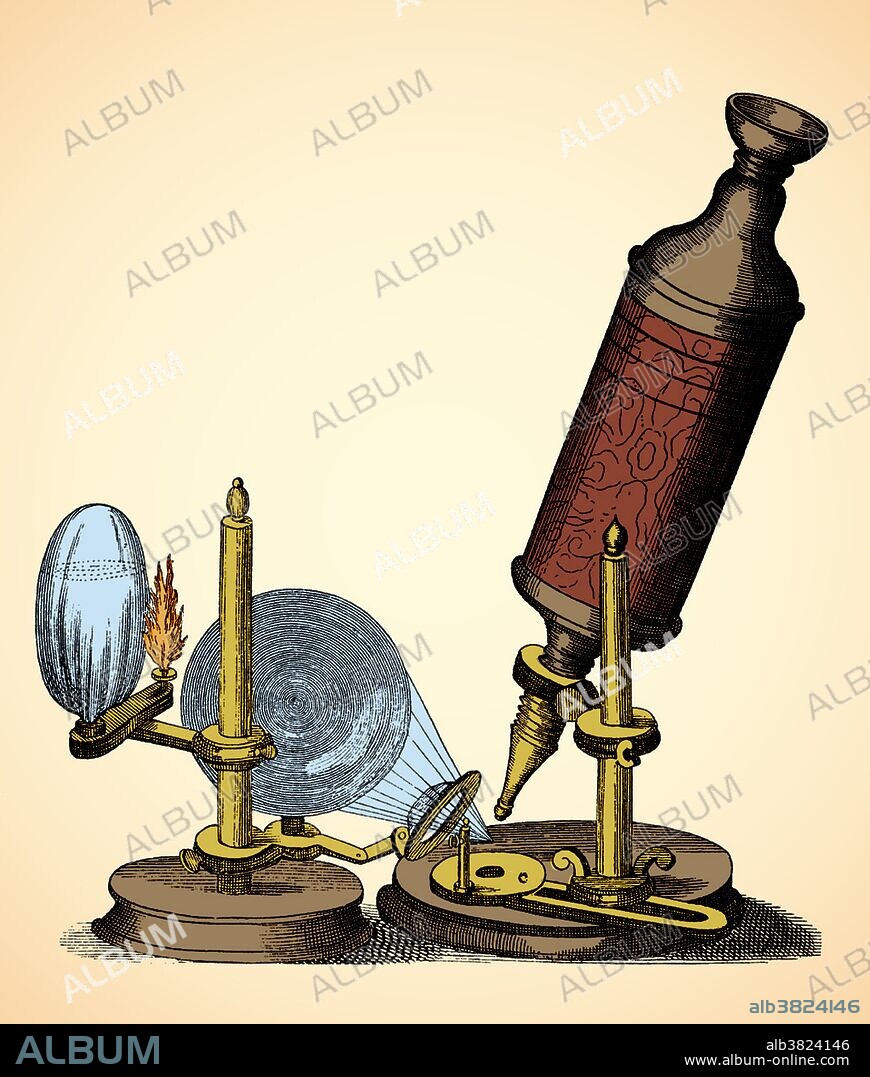alb3824146
Robert Hooke Microscope, 17th Century

|
Add to another lightbox |
|
Add to another lightbox |



Buy this image.
Select the use:

Title:
Robert Hooke Microscope, 17th Century
Caption:
The hand-crafted, leather and gold-tooled microscope Robert Hooke used to make the observations for Micrographia (1665), was originally constructed by Christopher White in London. The microscope shared several common features with telescopes of the period: an eyecup to maintain the correct distance between the eye and eyepiece, separate draw tubes for focusing, and a ball and socket joint for inclining the body. The microscope body tube was constructed of wood and/or pasteboard and covered with fine leather. When the draw tubes were fully closed the microscope measured six inches long. Hooke used a bi-convex objective lens placed in the snout and two additional lenses, an eyepiece lens and a field lens. To combat dark specimen images, Hooke designed a method of concentrating light on his specimens. He passed light generated from an oil lamp through a water-filled glass flask to diffuse the light and provide a more even and intense illumination for the samples. This image has been color enhanced.
Credit:
Album / Science Source
Releases:
Model: No - Property: No
Rights questions?
Rights questions?
Image size:
3569 x 4200 px | 42.9 MB
Print size:
30.2 x 35.6 cm | 11.9 x 14.0 in (300 dpi)
Keywords:
1660S • 1670S • 17TH CENTURY • ART • ARTWORK • BI-CONVEX • CELEBRITIES • CELEBRITY • COLOR ENHANCED • COLOR ENHANCEMENT • COLOR • COLORIZATION • COLORIZED • COMPOUND MICROSCOPE • DIAGRAM • DRAW TUBES • DRAWING • ENHANCEMENT • EYEPIECE • FAMOUS PEOPLE • FAMOUS • GOLD-TOOLED • HAND-CRAFTED • HISTORIC • HISTORICAL • HISTORY • HOOKE MICROSCOPE • HOOKE'S • HOOKE • ILLUSTRATION • ILLUSTRATIONS • IMPORTANT • INVENTION • LENSES • LETHER-TOLLED • LIGHT MICROSCOPE • MICROGRAPHIA • MICROSCOPE • NOTABLE • OBJECTIVE LENS • OPTICAL MICROSCOPE • ROBERT HOOKE • SCIENCE • SCIENCE: MICROSCOPE • WELL-KNOWN
 Pinterest
Pinterest Twitter
Twitter Facebook
Facebook Copy link
Copy link Email
Email
